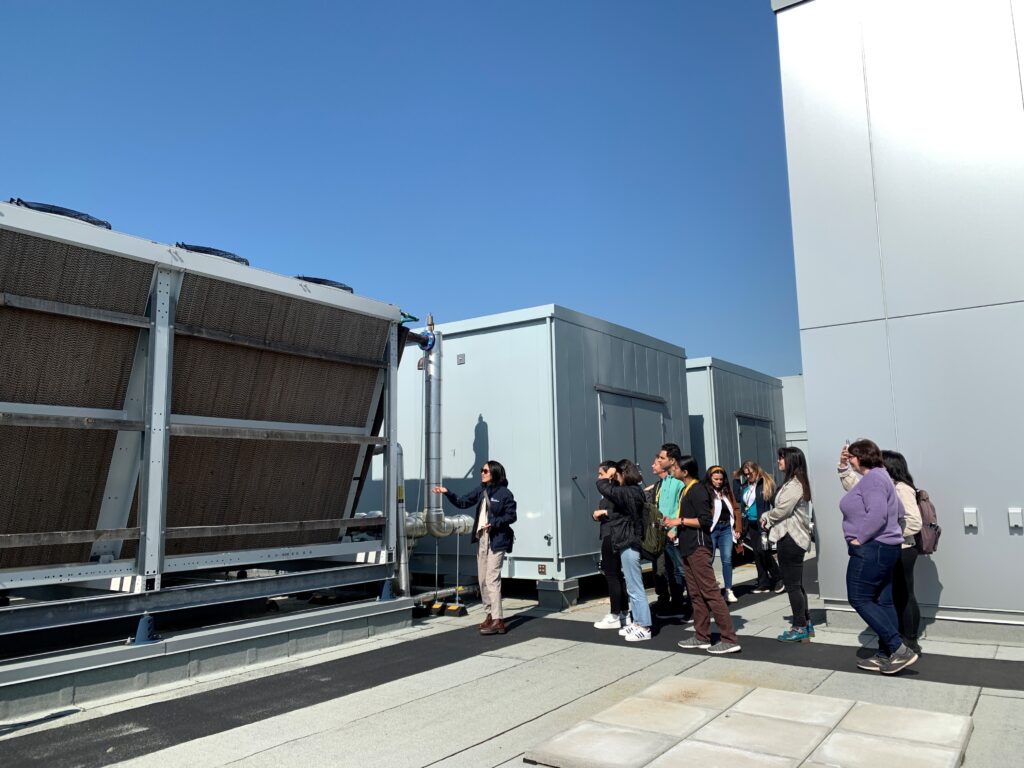Lectures provide opportunities to present key considerations and share information with students, and ways for students to ask professionals about a project. Some of the lectures include site tours, which provide opportunities to visit projects on campus and learn about real-world issues and challenges in the field.
Upcoming Living Labs Lectures
Upcoming Living Labs Lectures
There are no upcoming events at this time.
Past Lectures
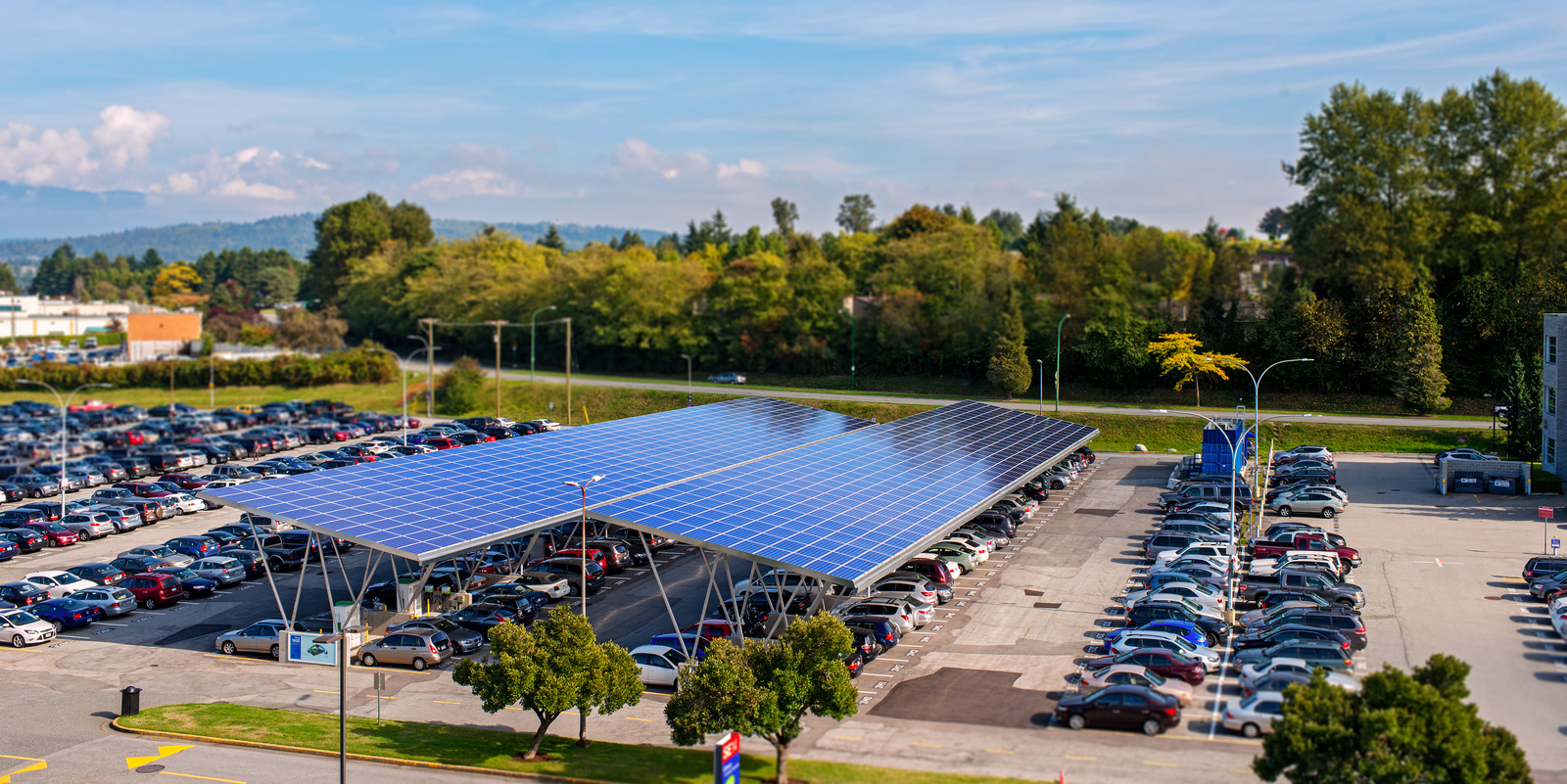
In the time since BCIT installed the solar tower at SE01, its first solar power demonstration project in 2003, solar has grown from an unusual, costly electricity source (0.01% of world electricity use) to a leader in power generation growth (6% of world electricity use – enough to power all of Canada, the UK, France, and Germany combined).
This lecture by AES Engineering and BC Hydro looked at the status of solar technology, its viability in rainy coastal BC, and its potential applications at BCIT.
Topics included opportunities to integrate solar into new campus buildings and the economics, benefits and risks involved. BC Hydro also provided an overview of their programs to enable and support solar installations for commercial and institutional electricity users and potential benefits from the utility perspective.
Speakers:
- Brent Lipson, Senior Associate AES Engineering
- Shantanav Bhowmick, Program Manager BC Hydro
Brent Lipson is a Senior Associate with AES Engineering, an electrical engineering consulting firm with a focus on building power, lighting, and technology systems. Brent has 20 years of power systems design experience, focused on healthcare, transit, and other institutional facilities, and interconnection of distributed generation systems ranging from 10 to 2000 kilowatts. He is active in electrical code and standards development and has authored research studies looking at the potential for using DC power distribution to improve power system efficiency, resilience, demand response, and solar + storage integration.
Shantanav Bhowmick is a Program Manager, with BC Hydro’s Industrial and Large commercial Product Management team. He manages the load displacement and energy audit programs; and supports customers from different sectors to take leverage of these programs. Prior to his 2 years in BC Hydro, Shantanav worked in the pulp & paper industry in Prince George, BC for 9 years in a variety of roles from high-voltage electrical engineering to project and energy management. Outside of work, Shantanav practices and teaches Yoga at local gyms in Maple Ridge and Langley; and moves travelling and camping in summer.
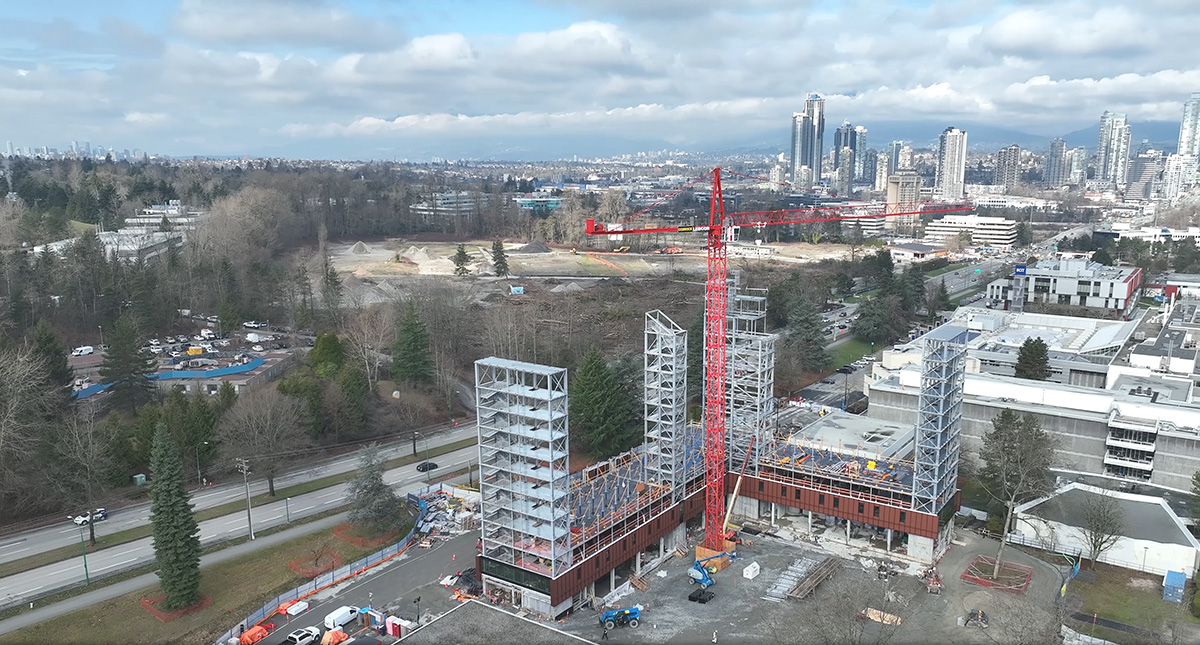
The last few months have been an exciting time for construction on the Tall Timber Student Housing Project. Construction of the structural steel frame has been completed and work to install the mass timber assemblies is well underway.
Building with prefabricated mass timber assemblies require careful coordination with subcontractors and consultants to ensure they can be rapidly installed to specification.
Previous lectures have focused on specific systems in the building. This lecture by Ledcor Construction Limited, General Contractor for Tall Timber Student Housing, looked at the role the general contractor plays in ensuring all these elements are coordinated to deliver this complex and ambitious project.
Topics included the differences between managing mass timber and conventional builds, the use of digital modelling to assist construction, and the challenges of site management.
Speakers:
- Logan Vandervelde, Senior Project Manager Ledcor Construction Limited
- Cole Edwards, Project Manager Ledcor Construction Limited
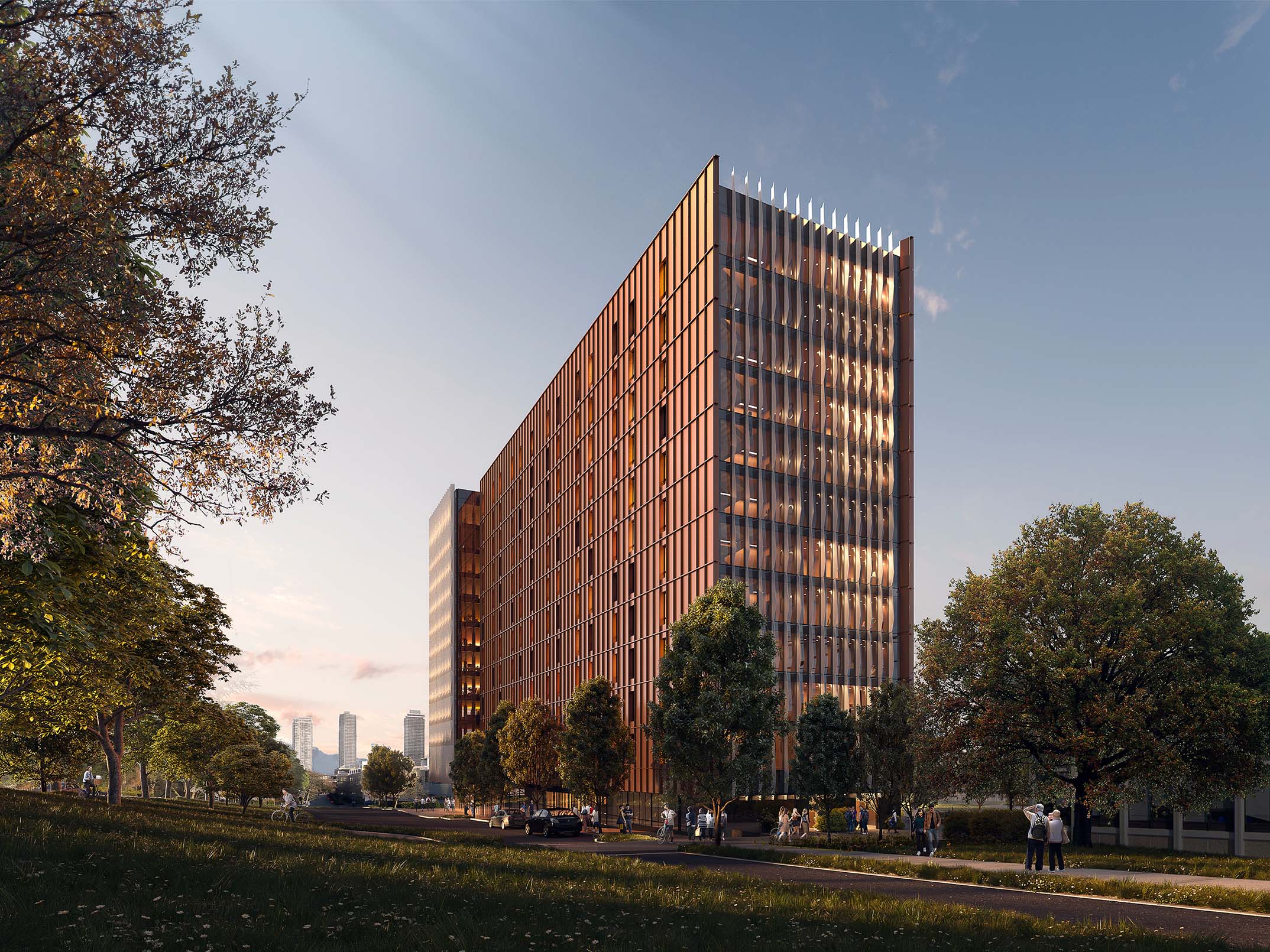
BCIT’s new student housing building makes use of prefabricated elements to allow for faster and more efficient construction.
A key part of this is a specially designed prefabricated Modular Envelope (PME) and Curtainwall system that is installed onto the mass-timber assemblies. The core of this design is a factory-assembled modular exterior wall that will deliver a quality, interlocking, airtight assembly. This also needs to deliver improved thermal performance to meet the energy performance standards.
This is manufactured by Flynn in Surrey before being delivered to site for installation.
This Living Labs lecture covered the design and installation process for this crucial element of the building. It brought together the core team of experts who worked on the system: structural engineers Fast and Eps, envelope consultants RDH, and manufacturers Flynn to provide a thorough overview of this bespoke solution.
Speakers:
- Jamie Pobre Sullivan – Associate: Fast and Epp
- Michael Wilkinson | Associate, Building Science Engineer, RDH
- Dan Geddes – Business Development Manager – Major Projects, Flynn Canada
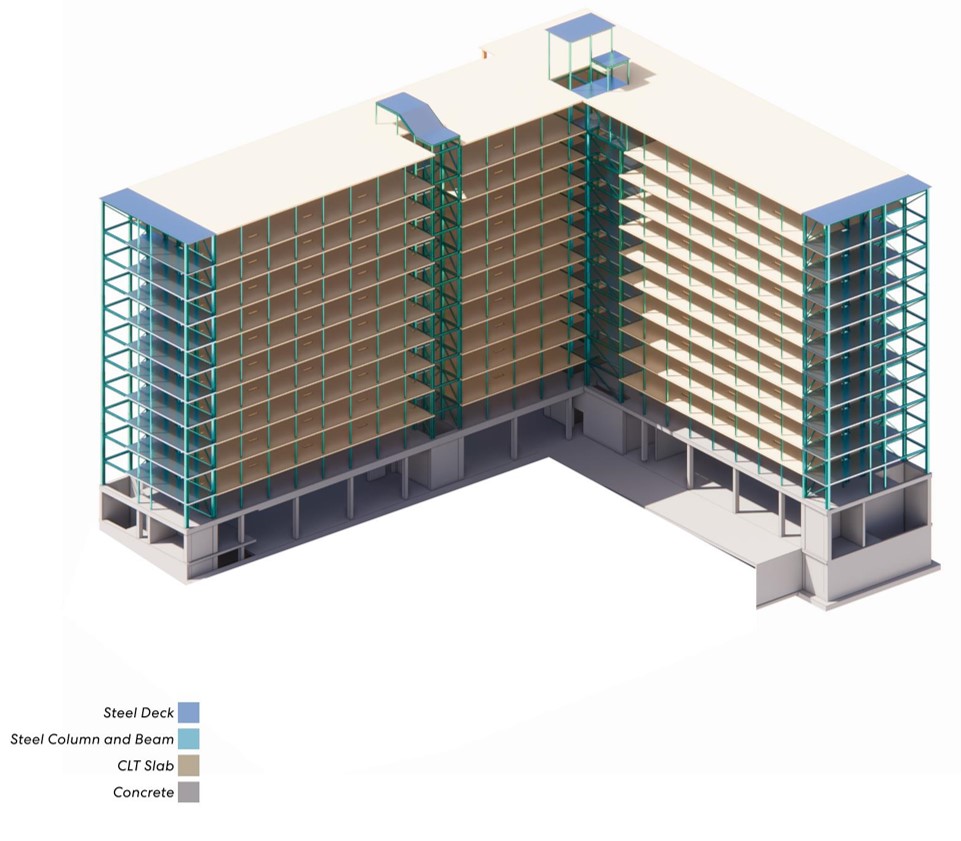
BCIT’s new Tall Timber Student Housing is one of the largest buildings in the Lower Mainland to make use of mass timber assemblies.
The design features a hybrid Cross Laminated Timber point-supported structure, consisting of mass timber (CLT) floors supported on steel HSS columns.
Each CLT panel is prefabricated to exact specifications from multiple alternating layers of dried lumber that are then pressed together, before being delivered to site for installation on the steel structure. This prefabricated CLT panelized design speeds up construction and limits trade overlap on site.
The design is intended to allow an entire floor to be installed in one week.
Project Structural Engineers Fast+ Epp and Kalesnikoff, who are fabricating the mass timber panels in their vertically integrated facility in the Kootenays, presented on the process of creating a mass timber system for such a large building. They looked at the design challenges of using CLT in a multi-story building, as well as how the mass timber panels are integrated with steel HSS columns.
Presenters:
- Jamie Pobre Sullivan: Associate Fast+ Epp
- Enrique Gonzalez: Project Manager Kalesnikoff
BCIT’s new buildings in the Trades and Technology Complex project are being designed to meet the highest performance standards for energy efficiency. This supports the Institute’s Greenhouse Gas reduction strategy. To achieve this each of the major elements of the building’s design must contribute to that overall performance standard.
This lecture focused on one of the most important parts of any high-performance building, the envelope. The design of the envelope can integrate passive environmental strategies such as solar heat gain control, controlled south light, ambient north light, stack effect, cross ventilation and operable windows for optimal management of heat, air and thermal performance. The envelope is also crucial to the building’s structural support and overall aesthetics.
Experts from RDH who are envelope consultants for the Concert Properties Centre for Trades & Technology, Campus Services Centre and Tall Timber Student Housing projects presented on the key considerations in designing a building envelope for a high performance or passive house building. Topics included assemblies, airtightness, details and a guide to thermal bridging in the design of the envelope.
Brian Hubbs is a Principal and Senior Building Science Specialist at RDH. Brian has over 25 years’ experience as a consultant practicing exclusively in the field of building science. Brian is a practical Facade engineer and researcher. He has a unique blend of theoretical and hands-on knowledge gained from designing Facades for new buildings, as well as completing hundreds of forensic investigations, rehabilitation and research projects. Brian has extensive experience with high-rise and Iconic façade systems, components, and materials and has designed new and innovative facade systems for high-rise wood and passive house projects. An engaging and vibrant presenter, he regularly speaks at seminars, conferences, and guest lectures on a wide range of building science and Façade Engineering topics.
Michael Wilkinson is an Associate and Building Science Engineer at RDH. He has provided consulting services across a range of building typologies with a focus on high performance and innovative building projects including those that are Passive House, mass timber, and volumetric modular. Michael has also been involved in numerous research projects including product development and performance monitoring and is the lead author of several guideline documents for government agencies and building enclosure product manufacturers. Additionally, Michael is a part-time instructor at BCIT where he teaches building science and construction technology classes.
The BCIT Tall Timber Student Housing tower is a mass timber building with steel at its core. It is supported by two-way spanning cross-laminated timber (CLT) flat panels supported on steel hollow structural sections (HSS) columns, resulting in a steel and timber hybrid system.
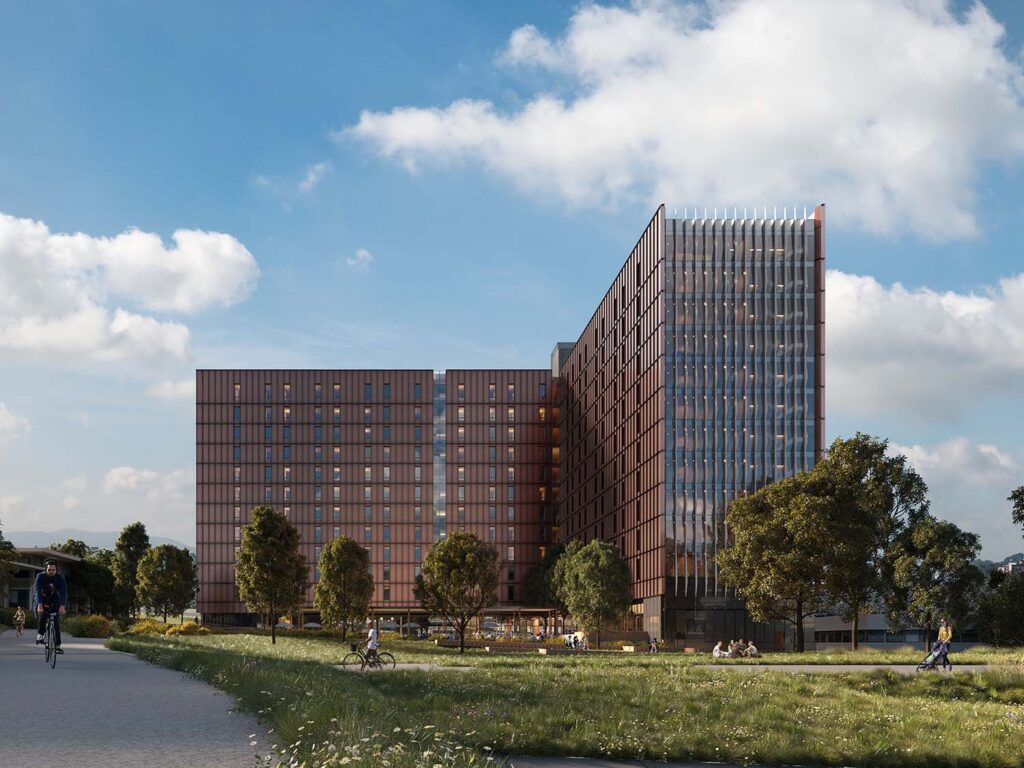
These “point-supported” CLT panels take advantage of the latest technology in wood innovation, comprised of the largest panel widths currently available in North America, and uses no beams, allowing for unobstructed service distribution.
Along with better understanding of fire resistance in mass timber, codified provisions for Encapsulated Mass Timber Construction in the National Building Code of Canada further allow for this tall timber tower to rise to new heights.
The lateral resisting system comprises of steel braced frames at the towers’ vertical egress cores, configured as self-stabilizing towers to avoid additional temporary bracing during construction. These cores will be fabricated off-site and delivered in sub-assemblies, while the steel HSS columns are light enough in weight to be lifted into place without heavy use of cranes, allowing quick and efficient installation. The pre-fabricated floor area provided within these stair and elevator cores during install, also permits four individual tower cores to be erected prior to install of any CLT floor. This then avoids additional crane-sharing and further increases installation efficiencies.
This Living Labs lecture brought together experts from Fast and Epp (structural engineers for the project) and CRS Construction (steel fabricators for the building) who discussed how these two important elements are integrated together from design to installation.
Topics included
- Role of structural steel in a mass timber building
- Logistics of preassembly and installation
- Design assist
Presenters
- Jamie Pobre Sullivan, Associate, Fast and Epp
- Tim Hough, Steel project manager CRS Construction
BCIT’s Tall Timber Student housing will feature a system of specially designed mass timber assemblies throughout the building. Using these prefabricated panels allows for a much quicker installation of the building’s structure. But how do you coordinate using prefabricated mass timber with all the other mechanical and electrical services that need to be installed in a major building?
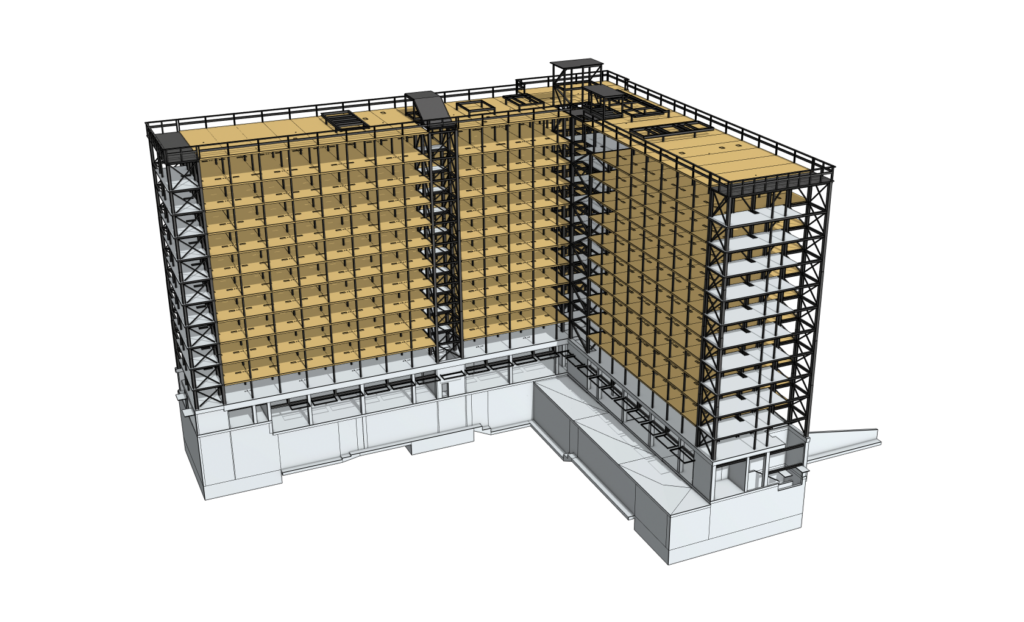
In this lecture two of key members of the team working on the mechanical systems at Tall Timber Student Housing discussed how these issues are addressed in a practical setting. Introba are the Mechanical Consultants for the Student Housing project and Enersolv will be installing the mechanical systems in the building.
The topics include how to distribute the pipes and ducts through the building, installation of rooftop equipment and how to work with the physical properties of mass timber.
Speakers
- Chris Doel MEng, CEng, MCIBSE, LEED Green Associate, Senior Vice President, Canada, Introba
- Callum Reid, Project Manager, Enersolv Design + Build Ltd
BCIT’s new Buildings are designed to reduce the Institute’s Greenouse Gas (GHG) emissions and to meet the highest level BC Energy Step Code 4. To achieve this requires buildings that minimize energy use and maximize operational efficiency. But what does design for a high-performance building really entail?
This lecture brought together experts from leading firms Patkau Architects, Focal Engineering, and Introba who are working on the Trades and Technology Complex Project to address this topical issue.
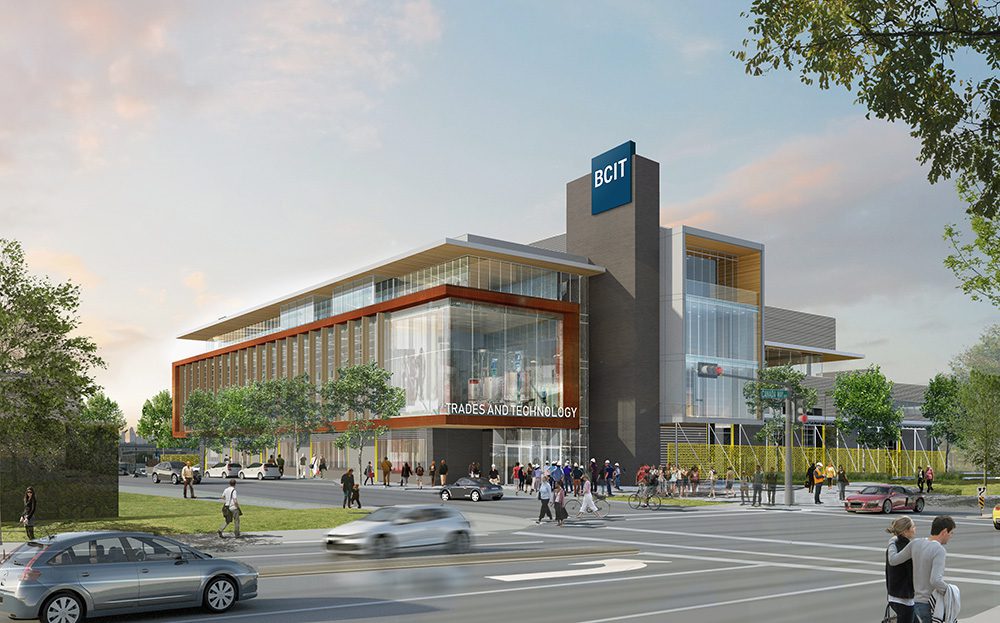
Topics included what measurements and metrics can be used to understand building performance and how the building’s shape, form, massing and orientation contributes to its performance. Passive design approaches mixed with active building system approaches were also touched upon. The lecture also looked at how climate change is affecting design assumptions.
It was a great turnout with just over 100 in attendance in person and online!
Speakers
Patkau Architects – Greg Boothroyd, Architect AIBC FRAIC, LEED AP
Focal Engineering – Riley Beise P.Eng., BEMP
Introba – Kevin Shea, P.Eng., CPHD, LEED Green Associate & Sean Casey, MFA, Assoc IALD + IES | Associate
Patkau Architects: We are an architecture and design research studio based in Vancouver, Canada. The practice was founded in 1978 by Patricia and John Patkau. We deliver a wide variety of project types, ranging in scale from art installations to custom homes and major urban buildings.
Focal Engineering – Zero Carbon: Focal Engineering was established in 2015 and has provided energy services to hundreds of projects. As independent energy modellers, we take a whole building perspective to energy analysis, balancing the importance of the building envelope, mechanical and other building systems.
Introba – Mechanical: Is one of the world’s largest building engineering and consulting firms with more than 1,000 employees in offices across the United States, Canada, the United Kingdom, Serbia, and Australia. Introba is the coming together of Integral Group, Ross & Baruzzini, Elementa Engineering, and Elementa Consulting.
Carol Phillips (Architect, Partner Moriyama Teshima Architects) and Kevin Shea (Engineer, Passive House Designer, Principal Introba) presented on the principles to achieve net zero carbon emissions for sustainable building operations. These principles identify strategies and pathways that are under consideration in the design of the new Campus Services Centre (CSC) on the Burnaby Campus.
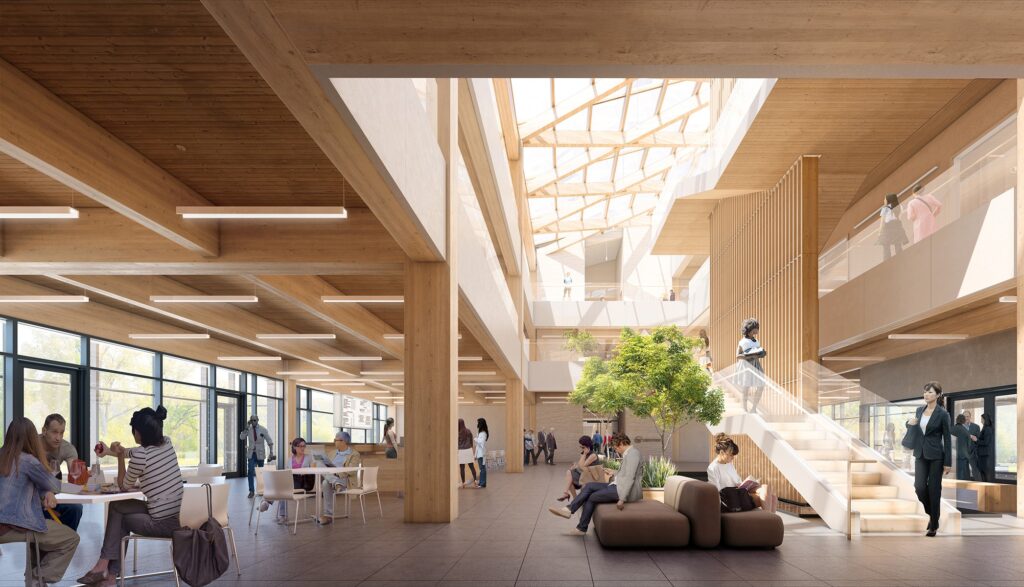
MTA and Introba are part of the team of consultants providing the design services for the CSC at the Southeastern limits of the campus adjacent to Guichon Creek that is part of the Trades and Technology Complex project. The CSC will consolidate BCIT’s stakeholders responsible for the operation, maintenance, and development of the campuses’ physical buildings, supplies and infrastructure.
The presentation focused on two buildings designed with the team including MTA and Introba that are currently under construction in Ontario that are using several systems that could be applied to the CSC. The content of the presentation included information on passive systems, low impact active systems, certifications, and analysis tools such as energy modelling and life cycle analysis for embodied and operational carbon use.
Caroline Charbonneau (Stormwater Engineer), Andrew Kolper (Senior Hydrotechnical Engineer), and Alan Jonsson (Ichthyo Fluvial Specialist) from Kerr Wood Leidal (KWL) presented on the challenges and opportunities of daylighting Guichon Creek on the Burnaby Campus.
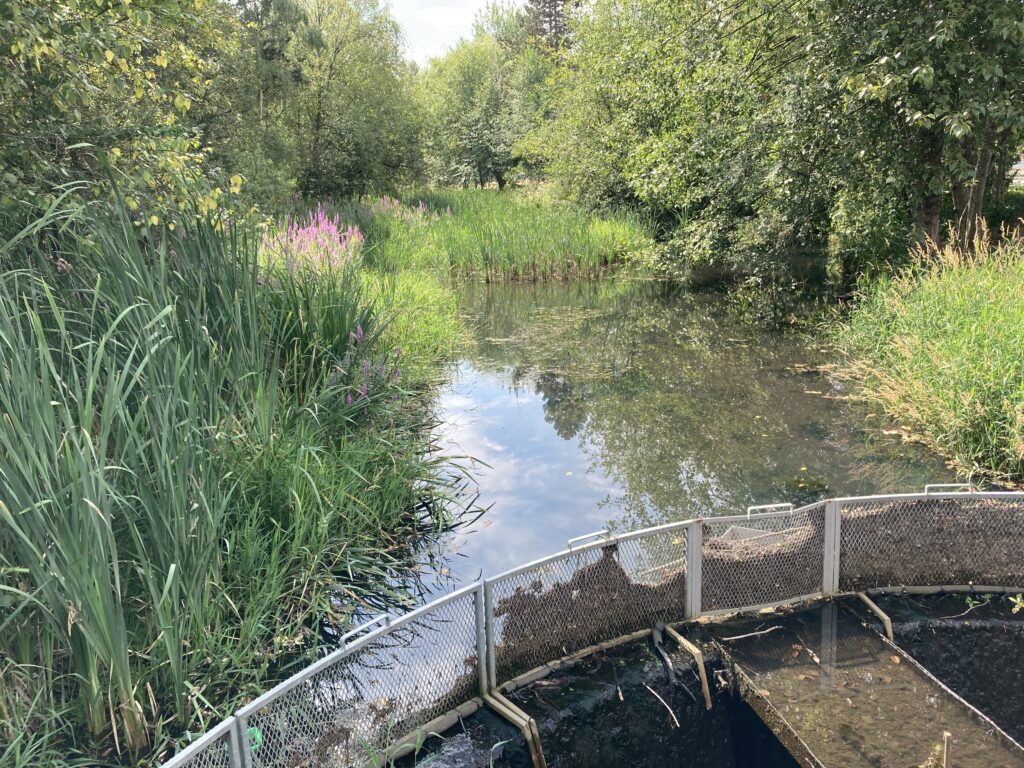
This event was part of BCIT’s Guichon Creek Day – an annual celebration of Guichon Creek which is one of the most significant tributaries of Still Creek and runs directly through the Burnaby campus.
KWL are part of the team working to daylight a section of the Creek that runs through a culvert under the north part of the Burnaby Campus. This is part of the Trades and Technology Complex project. They are also part of the team working on the remediation works for the sinkhole downstream of the existing weir on campus including a small section of creek daylighting.
The presentation focused on what is required to successfully restore an urban stream like Guichon Creek, including how to create a natural channel in an urban setting while ensuring that it can provide suitable habitat for plants and animals, while also allowing for fish passage along the length of the creek.
The team also looked at examples of similar projects elsewhere in the Lower Mainland.
KWL is a Vancouver based engineering firm who are recognized across Canada as a leader in developing innovative and environmentally beneficial applied science solutions that address challenges in the natural and built environment. Their goal is to develop engineering projects that improve areas and communities, by providing them with water, a safe community and energy infrastructure solutions to better serve them.
Mass timber construction is a rapidly expanding field in BC that can offer environmental and aesthetic benefits over more traditional carbon-intensive materials. Two leading industry experts talked about the principles that guide their work using mass timber and how these ideas are being applied at BCIT in the designs for the new Campus Services Centre, part of the Trades and Technology Complex.
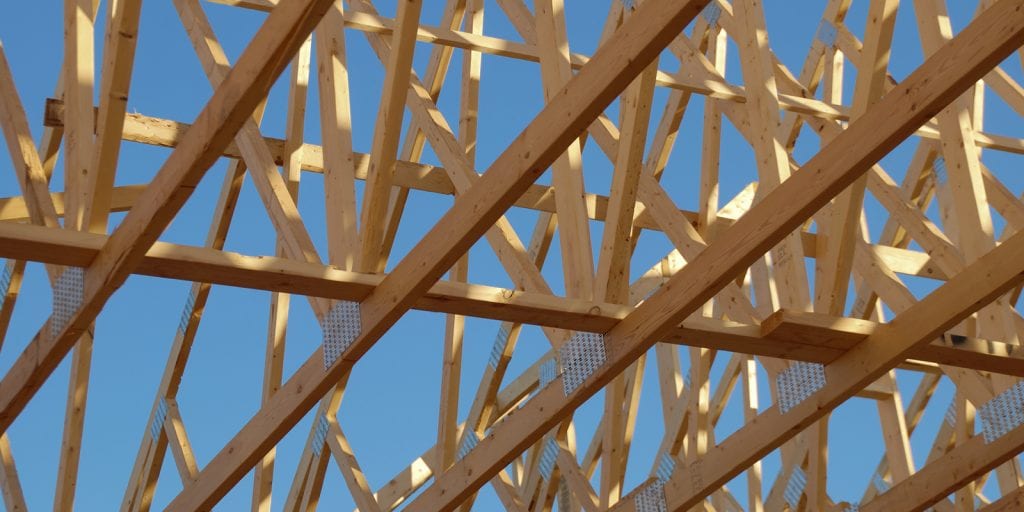
Robert Jackson is a partner with Fast +Epp, an internationally recognized structural engineering firm with a team that prioritizes creativity and simplicity. They are part of the team working on the Campus Services Centre and are also structural engineers for the Tall Timber Student Housing Project.
Ian McDonald is a partner with Carscadden Stokes McDonald, a leading Vancouver based firm dedicated to designing and building structures that strike a fine balance between beauty and function. They are currently part of the team working on the design for the Campus Services Building.
Jordan Edmonds, Principal at Urban Arts Architecture (UAA) led a show and tell of their work with engineered mass timber structures, and their ongoing research exploring the potential for whole wood construction in net-zero carbon building. They explored:
- How do we reduce processing waste and increase performance of wood fibre technologies to minimize the global warming potential of our buildings and use our forest resources more efficiently?
- How do we enhance the future value of our buildings, reducing the need to return to the forest for redevelopment?
Urban Arts Architecture is an award-winning Vancouver based architectural firm. They are currently working on the designs for two of the buildings (the Robert Bosa Carpentry Pavilion and the Marine and Mass Timber Workshop) that make up the Trades and Technology Complex, and which will incorporate engineered mass timber and wood fibre technologies in their construction.
This lecture and tour provided an opportunity for students and employees to learn more about the features that make the new Health Sciences Centre a sustainable building, from ground source heating to EV charging. Also covered was how the Energy Team remotely monitors and adjusts the buildings systems to optimize heating and lighting. Practical tips on how we can contribute to saving energy everyday were provided.
At the end of the lecture a tour of the building was provided to look at how these systems work in practice.
